Are eco-urbanism and urban resilience still relevant? Yes, perhaps now more relevant than ever before. However, their potential needs to be understood from a new perspective.
Russia’s invasion of Ukraine has exacerbated existing problems in global supply chains of two fundamental commodities, namely energy and food, which in turn are leading to soaring inflation. In response, several countries are abandoning their commitments made at the COP26 conference to reduce carbon emissions and instead going back to coal and other forms of polluting energy. The global situation is further exacerbated by the increasingly frequent threats by Russia to use tactical nuclear weapons as an attempt to change the course of its failing invasion of Ukraine. This current situation is superimposed upon an social and political environment that already had all the enabling conditions for the rise of populist right-wing governments across Europe and the Americas, including globalisation, rising inequality, and declining social mobility ― all of which increases climate change skepticism and the belief in the inevitable clash of civilisations.
Against such a background it is legitimate to ask are eco urbanism and urban resilience still relevant? This article will argue that they are perhaps now more relevant than ever before. However, their potential needs to be understood from a new perspective.
Clash of Civilisations or a forward drive of modernity and prosperity on a planet for all?
The theory of the Clash of Civilisations rose to fame with the publication of Huntington’s book with the same title. In it, civilisation may be described by a series of relationships and trade-offs. Civilisation can be defined by different relationships between (1) Humans, Religious Institutions, and their respective god(s); (2) the Individual and the Group; (3) the Citizen and the State; (4) Man and Woman; and (5) Parents and Children. It is further refined and delineated through different views on the trade-offs between (1) Rights and Responsibilities; (2) Liberty and Authority; and (3) Equality and Hierarchy. These differences are the product of centuries of development. For example, western civilizations share the common experience of European history, feudalism, the Renaissance, the Reformation, the Enlightenment, the French Revolution, and the Industrial Revolution. However, particularly in the Era of the Anthropocene, the above traditional definition needs to include the relationship between man and nature, and the trade-offs between the economic growth of human societies and the protection of natural resources and ecosystems. Failing to address these additional relationships and trade-offs may lead to a case of excessive pressures on planetary boundaries that made human settlements and specialization of labour possible in the age of the Holocene.
The theory of the Clash of Civilisations argues that the collapse of communism in the USSR, and the failure of ideas of nationalism and socialism in the Middle East, leads to a wider cultural rift as people in Russia go back to Russianization and people in the Middle East go back towards Islam. Therefore, it is argued that the most important conflicts of the future will occur along the cultural fault lines separating these civilizations from one another. To what extent is this valid today, and what are the chances of increased efforts for eco-urbanism and urban resilience against such a background? Before answering this question, it is useful to see how proponents of this theory responded from a cultural and social science critique perspective.
Said contested the notion that civilizations are monolithic and homogeneous and the unchanging character of the duality between “us” and “them” ― a notion that is prevalent in the establishments of developed first-world countries as well as developing countries. While recognising that differences do exist between Islam, Confucianism, Hindu, Japanese, Slavic, Orthodox, Latin American, and African civilizations; he refused the notion that their differences will inevitably lead to conflict. First, statements about what ‘our’ culture is, what civilization is, or ought to be, necessarily involves a contest over the definition; hence it is more accurate to say we are living in an era of the clash of definitions. To emphasize the differences between cultures is completely to ignore the literally unending debate about defining the culture within civilisations ― particularly important as these debates completely undermine any idea of a fixed identity and hence relationships between fixed identities.
Second, cultures are not the same. There is an official culture, a culture of priests, academics, and the state; that speaks in the name of the whole and provides definitions of patriotism, loyalty, boundaries, and belonging. However, there are also dissenting or alternative, unorthodox, heterodox, strands that contain many antiauthoritarian themes in them that are in competition with the official culture. This “counter-culture”, consists of an ensemble of practices associated with various kinds of outsiders, the poor, immigrants, artistic Bohemians, workers, rebels, and artists.
Third, tradition can be invented, and the idea of a culture and civilization being something that’s stable and fixed is completely disproved by this notion of how traditions can be invented, manufactured for the occasion so the traditions are abstractions that can quite easily be created, destroyed, manipulated, and so on. Fourth, too much focus on the clash of cultures obliterates something else: the fact of a great and often silent exchange and dialogue between them. Indeed, the weakest part of the clash of cultures and civilizations thesis is the rigid separation assumed between them despite the overwhelming evidence that today’s world is, in fact, a world of mixtures, of migrations and of crossings over, of boundaries traversed. There are no insulated cultures or civilizations. Any attempt made to separate them into watertight compartments does damage to their variety, their diversity, their sheer complexity of elements, and their radical hybridity. The more insistent we are on the separation of cultures, the more inaccurate we are about ourselves and about others. The notion of an exclusionary civilization is an impossible one.
The more integrative but more difficult path is to try to see cultures and civilisations as making one vast hole, whose exact contours are impossible for any person to grasp, but whose certain existence can intuit, feel, and study. Such an approach will allow for a new global consciousness that sees the dangers we face from the standpoint of the whole human race including a) climate change, b) threat to biodiversity, c) rising inequality, and d) the emergence of virulent local, national, ethnic, and religious sentiment.
How do eco-urbanism and urban resilience fit in? In every way!
Focusing on the shared experiences and interactions between cultures on how to improve urban resilience and protect eco-diversity, can help the broader objective of enabling a global consciousness that focuses on the dangers we face as a human race.
The relationship between humans, religious institutions, and the associated god(s) varies across countries and religions and is rather complex. Across 800 regions of the World, research shows that people are more religious when living in regions that are more frequently razed by natural disasters. This is in line with psychological theory stressing that religious people tend to cope with adverse life events by seeking comfort in their religion or searching for a reason for the event; for instance, the event was an act of God. It is generally agreed that religious institutions can play a vital role in relief operations and funding in the immediate aftermath of disasters, while also proving to be the space for long-term healing. However, their other role in sometimes promoting disasters as an act of god often benefits authorities, particularly in third-world countries that are characterized by a more religious and less educated population and where religious authorities are under some form of control or influence of the authorities. By portraying disasters as an act of god, which was the rule rather than the exception before the Enlightenment, the discussion shifts away from an examination of the man-made decisions that led to certain development choices which resulted in an unfair and unequal distribution of exposure, vulnerability, risk and losses among different population groups. Sharing and learning from the successful experiences of scrutinizing development choices that lead to disproportionate exposure, risk, vulnerability, and losses would help reduce future disaster losses. It would also help raise awareness of how religion is often maliciously used by authoritarian regimes and greedy investors. This increased awareness, when acted upon in a communal manner, can have a ripple effect on putting an end to the malicious use of religion at large in the long term.
The relationship between the Individual and the Group ― and later on in human development, the relationship between the Citizen and the State ― varies across countries and throughout history. It is affected by trade-offs between liberty and authority, hierarchy and equality, and rights and responsibilities. When the above trade-offs are biased towards elite-captured, despotic, and undemocratic societies; we see marginalized groups being more exposed, more vulnerable, more at risk, and subject to disproportionate disaster losses as a result of decisions taken by the elites. In these circumstances, the process of the use of natural resources (mineral, land, sea, and human) disproportionately benefits the elite, while risks and losses are disproportionately concentrated amongst vulnerable groups (including class, ethnic, sectarian, and cast-vulnerable groups). As a result, social mobility declines, inequality, and marginalization increase, thereby creating the socio-economic conditions for the rise of extremism in all its forms (across the political and religious spectrum). Sharing and learning from the successful experiences of the regulatory role of the state in protecting individuals and groups from the risks associated with the actions of other individuals and groups, would help reduce disaster losses while also reducing inequality and marginalisation. It would also help raise awareness on how the populist “politics-of-fear” is often used by authoritarian regimes who are themselves perpetuating the socio-economic conditions of inequality and declining social mobility.
The relationship between men and women, and the rights and the degree of protection afforded to women have varied across the ages and continues to vary between cultures. While improvements have been made in the last few decades, gender inequality is still very much present in many parts of the world – and this is also true about disaster preparedness, response, and recovery efforts. The statistics can be staggering; when disaster strikes, women, boys, and girls are 14 times more likely than men to die. Furthermore, boys were given preferential treatment during rescue efforts, and, following disasters, both women and girls suffered more from shortages of food and economic resources.
Let us review a real example from a notorious disaster: of the 230,000 people killed in the 2004 Indian Ocean Tsunami, 70 percent were women. Following a disaster, it is more likely that women will be victims of domestic and sexual violence; they even avoid using shelters for fear of being sexually assaulted. This is not surprising, as the inequalities that exist in a society are likely to be amplified in a disaster, especially when successive human development reports highlight that gender disparity remains among the most persistent forms of inequality across all countries and gender inequality is one of the greatest barriers to human development. For example, analysis of flood Disaster Risk Reduction (DRR) efforts shows that women are more vulnerable to the flood disaster compared to men, due to differences in employment status, income, gendered social roles, social norms, and restrictions governing behaviour. Incorporating gender considerations in DRR efforts, from prevention through response to recovery, will significantly reduce the number of fatalities due to disaster losses. In turn, this would also help raise awareness of the multi-dimensional cost of bias against women and help lobby for a radical change of male chauvinistic norms.
The relationship between parents and children differs across civilizations and affects and is impacted by DRR practices in several ways. Bronfenbrenner’s ecological systems theory views child development as a complex system of relationships affected by multiple levels of the surrounding environment, from immediate settings of family and school to broad cultural values, laws, and customs. From a DRR context, a culture affects this relationship depending on the degree to which it considers it its duty to pursue policies that (i) will create opportunities for social mobility so children of poorer backgrounds can better their life chances; and (ii) will protect the elderly and provide them with care in case they lack the financial means themselves to do so. Countries that strive to have financial, economic, and social policies that contribute to social mobility have to pay extra attention to ensure that disaster losses do not detrimentally affect social mobility. Furthermore, they need to do so most effectively through the adoption of preventative measures before a disaster strikes. In these countries, parents do support their children; however, the state also provides the conditions for social mobility. Similarly, while children support their parents the state ensures that DRR policies are not ageist.
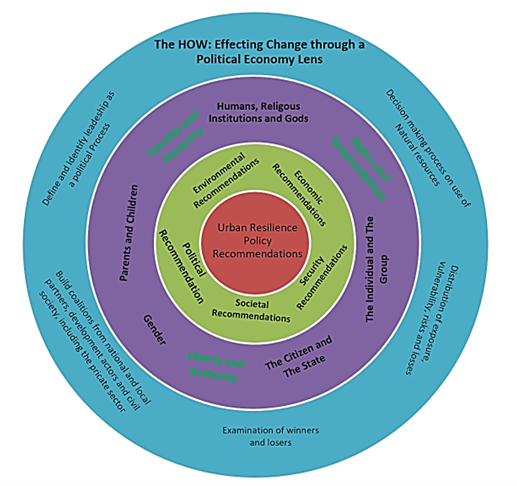
On the other hand, countries characterized by elite capture, while often adopting populist policies, do not invest in long-term policies that can lead to social mobility. In fact, these countries promote and rely on a rentier culture leading to cronyism, where protection against a disaster is a gift from the authorities rather than a citizen’s right. Such countries prefer handing out compensation after a disaster, albeit in a biased manner, rather than invest in more cost-effective and sustainable preventative measures, albeit less politically appealing within a rentier culture. This leads to a culture where, even if parents support their children, social mobility is more difficult, and chronic poverty becomes more prevalent. Lack of social mobility increases the fragility of states, decreases state legitimacy, and increases the drivers of violent extremism.
A way forward for effecting change
The above discussion showed the potential of sharing DRR best practices across cultures and civilizations, while also highlighting their potential impact on reducing violent extremism and promoting multicultural understanding and cooperation. However, effecting change requires Agency to Operationalize Values formed by education, long-life learning, and shared experiences (including on best DRR practices). Furthermore, effecting change requires promoting the notion of Solidarity, in addition to the more traditional top-down concept of protection by the state and bottom-up approach of empowerment.
The notion of Solidarity can be best promoted and built upon by adopting a political economy lens that focuses on the following aspects of the problem under consideration:
- Understand the dynamics of the Decision-Making Process: Develop an understanding of the existing dynamics that create certain winners and losers arising from the existing use of resources (human and natural in land, sea, and air), in particular through understanding the vertical and horizontal distribution of benefits, exposure, vulnerabilities, risks and losses arising from the development choices. In doing so, recognise and develop an understanding of governance and decision-making mechanisms encompassing a broad set of political institutions both formal and informal. While doing so, pay special attention to those represented in the decision-making forum, and the main gatekeepers of such forums that allow or prevent certain development choices from being discussed.
- Multi-Faceted Role of Advocacy and Awareness Raising: Address the multifaceted role of advocacy, education, and awareness-raising campaigns targeting various stakeholders and national partners, including i) promoting an understanding of roles and responsibilities between the citizen and the state; ii) the interconnectedness of problems; iii) the relationship between rentier states, cronyism, sectarian politics and disproportionate public sector employment; iv) development, employment opportunities and basic services as rights in productive states vs. the favouritism adopted in distributing them in rentier states; and v) need to supplement technical budget solutions with political lobbying and advocacy based on political economy analysis.
- Identify Leaders and Build Coalitions: Provide support for local actors to carry out political economy analysis to enhance their understanding and lobbying along the above lines. In addition, identify potential national and local partners from civil society and local development leaders, including the private sector. Employ a definition of leadership as a political process involving the skills of mobilizing people and resources in pursuit of a set of shared and negotiated goals. Support the formation of coalitions for change with leaders and stakeholders as defined above.
While the above may seem like a daunting task, perhaps now more than ever the future of humanity depends on its successful achievement.
Fadi Hamdan
Athens


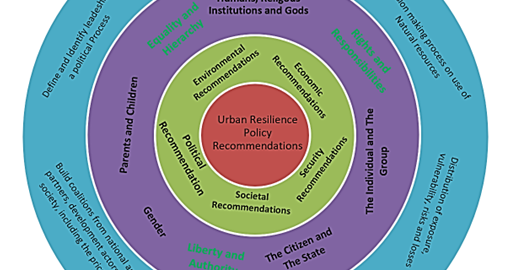

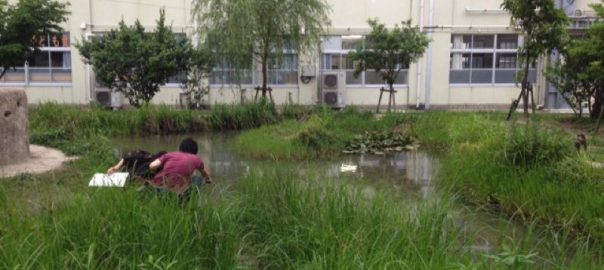
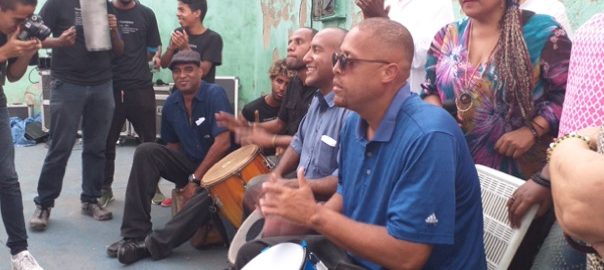
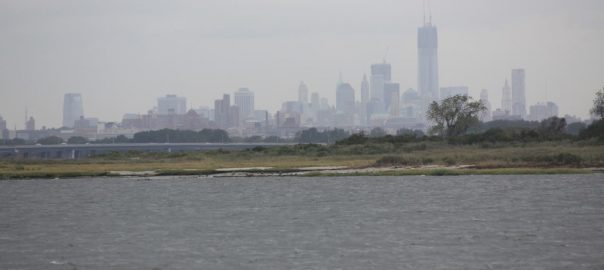
Leave a Reply